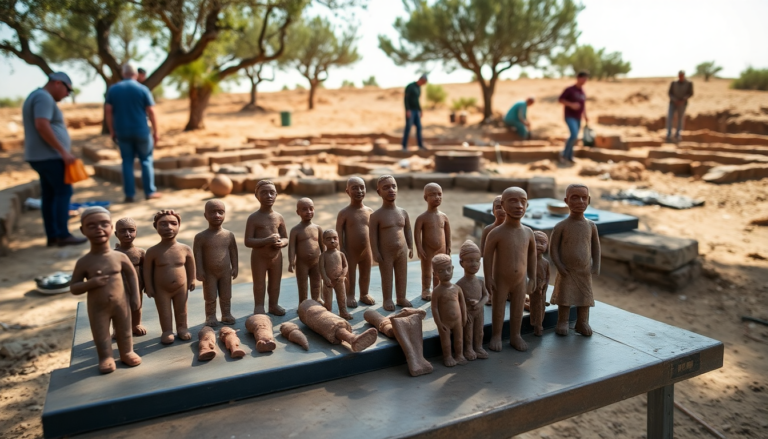Argomenti trattati
Imagine stumbling upon a treasure trove of history, one that challenges our understanding of cultural connections in ancient times. That’s exactly what happened in the southern Negev region, where archaeologists recently uncovered anthropomorphic figurines that date back approximately 1,500 years. Found in a necropolis near Tel Malḥata, these figurines tell a compelling story about the vibrant interactions that shaped the cultural landscape of this area, now within the borders of modern-day Israel.
Significance of the Tel Malḥata site
The site of Tel Malḥata was not just a mere settlement; it served as a bustling hub for trade routes connecting the Arabian Peninsula, the Indian subcontinent, and East Africa with the Mediterranean basin. The archaeological team, composed of international experts, has highlighted the strategic importance of this location, evident from the diverse assortment of artifacts discovered, including glass, precious stones, and bronze jewelry. However, it’s the discovery of the figurines that truly captivates the imagination.
Crafted from exquisite materials like bone and ebony wood—imported from southern India and Sri Lanka—these figurines depict men and women with distinctly African features. Some specimens intriguingly feature holes at the top, suggesting they might have been worn as amulets or pendants. Perhaps they accompanied travelers on their journeys, or were cherished family heirlooms passed down through generations. The very idea stirs a sense of nostalgia—like the time I found my grandmother’s locket tucked away in an old drawer, each piece an echo of a life lived.
Rituals and beliefs intertwined
According to researchers, these artifacts are far from mere decorative items. The careful placement of the figurines alongside the remains in the graves indicates their profound emotional and spiritual significance. The archaeological context reveals a clear Christian influence on the burial practices observed, which date from the sixth to the seventh century CE.
Particularly captivating is the discovery of two figurines found in a dual burial site, believed to belong to a woman and a child—possibly a mother and her offspring. This intimate choice to accompany the deceased with such personal objects not only reflects a strong Christian faith but also hints at the persistence of ancient customs, suggesting that the transition to Christianity did not erase the pre-existing cultural practices.
Continuity of cultural identity
Experts like Dr. Noé D. Michael from the Israel Antiquities Authority argue that the artifacts embody a cultural continuity that persisted even after the adoption of Christianity. These figurines might symbolize the memory of ancestors or represent identities rooted in African communities that migrated to the Negev as traders, settlers, or members of mixed families. It’s fascinating to consider how these individuals may have maintained a deep connection to their ethnic origins, even while embracing new religious practices.
Thus, the figurines stand as tangible representations of dual belonging: to a new religious community and to ancestral traditions, merging into a personal symbolism that transcends geographical and cultural boundaries. It’s like holding onto a piece of home while navigating the world, isn’t it?
A reminder of a rich tapestry of human history
Eli Escusido, the Director of the Israel Antiquities Authority, emphasizes that the value of these findings extends beyond their historical significance. “These artifacts are touching not only from an archaeological perspective but also from a human one,” he remarked. “They remind us that the land of Israel has always been a place of passage and encounters. Here, distant peoples have mingled, leaving traces of their presence, beliefs, and memories.”
In essence, the figurines from Tel Malḥata echo the silent voices of an ancient humanity, continuing to narrate stories of migration, integration, and identity—even in today’s world, where cultural roots are more pertinent than ever. They invite us to reflect on the intricate and rich pathways of human experience, even in the heart of a once-barren desert.

